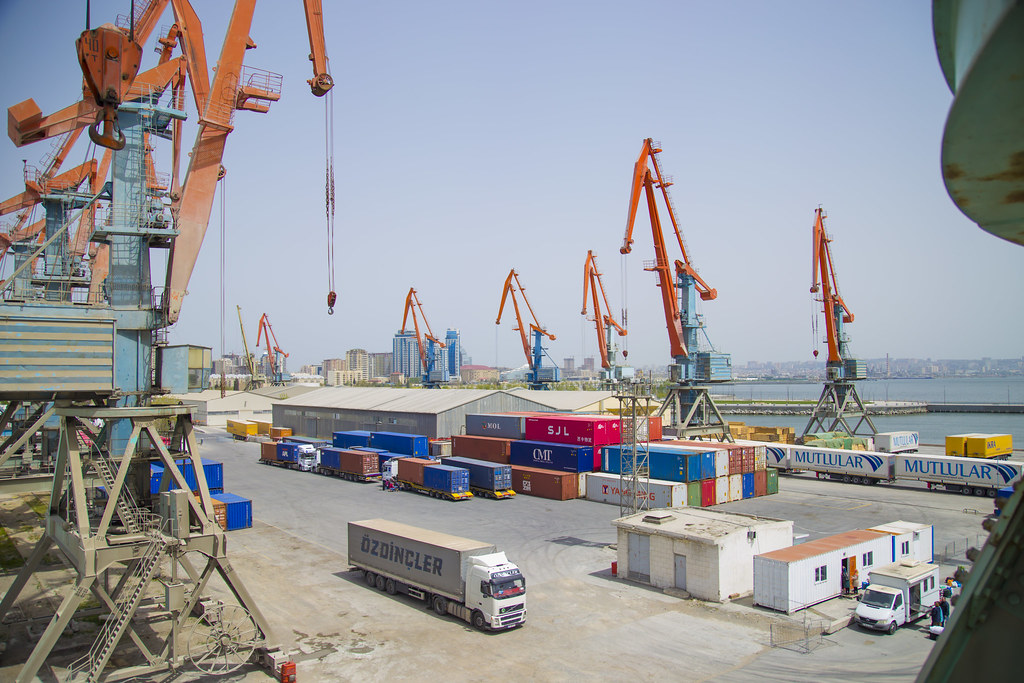17 Projects to Watch in 2017

Reconnecting Asia is tracking developments across a vast landmass that includes 60 percent of the global economy. Every day, new infrastructure projects are announced, some are advanced, and others encounter obstacles. Here is a selection of the top projects we’re watching in 2017.
Baku International Port Alyat

This new port just south of Azerbaijan’s capital is an extension of the Port at Baku and claims to link Turkey, Iran, India, Russia, and the European Union due to the three international rail lines that converge there. The first phase of the port’s construction should be fully completed in 2017, with the timeline for phases two and three contingent on initial cargo volumes.
Kuala Lumpur – Singapore High-Speed Railway
This railway will connect the capital cities of Malaysia and Singapore, cutting travel time to 90 minutes and increasing economic integration. The project requires 350 km of new railway tracks and is striving to break ground in 2017.
Baku – Tbilisi – Kars Railway
The Baku – Tbilisi – Kars railway is a major regional initiative to link the capital cities of Turkey, Azerbaijan, and Georgia. The project aspires to become fully operational in 2017, but each country’s section is currently in a different stage of completion.
China-Laos High-Speed Rail
Part of the Kunming – Singapore railway corridor, plans for this 420 km line will connect Boten in Laos’s Luang Namtha Province on the border with China to the Thailand-Laos border crossing at Vientiane. Construction should start in 2017, and the success or failure of the project could be telling for the future of the broader initiative.
Dali-Ruili Railway
A signature component of China’s “One Belt, One Road” initiative, this project is the Chinese portion of the China-Myanmar railway. Construction on the connecting line through Myanmar is currently stalled, leaving the fate of this aspiring regional connection uncertain.
Amur Bridge Project

This bridge linking Russia and China over the Amur river was originally proposed by Russia in 2007. Almost ten years later, the Chinese portion of the bridge has been finished, but work has yet to start on the much shorter Russian portion. The project’s fate may become clearer in 2017.
Samarga Port
In late 2016, the company “Samarga Holding” announced their intention to build a port at the mouth of the Samarga river in Russia’s far east by 2025. A rail line will connect the port to Kharabovsk, cutting more than 500 kilometers off the journey to the coast.
Busan New Port Expressway II
Slated for completion in 2017, this expressway will connect South Korea’s largest port with the country’s two largest cities, Seoul and Busan. The new route is expected to increase national connectivity and could have significant implications for the global shipping industry.
M-11 Moscow – St. Petersburg
This motorway between Moscow and Saint Petersburg is designed to relieve the heavy traffic on the existing M-10. The road is expected to finish in time for the 2018 FIFA World Cup in Russia but has encountered delays as well as fierce environmental protests in 2010.
Karachi-Hyderabad motorway (M9)
This super-highway plays a critical role in the China-Pakistan Economic Corridor (CPEC) and has two additional lanes slated for completion in 2017.
Turkmenbashi International Sea Port
Located in the eastern part of the Caspian Sea, this port has historically been known as a “Turkmen Port for the Silk Road” for its role as a key transit hub between Central Asia and Europe. An expansion of the port is scheduled for completion in 2017.
Beskyd Railway Tunnel
Part of Pan-European Transport Corridor V, this tunnel could help alleviate a bottleneck between two Ukrainian cities, Lviv and Chop. Financers have called the project an “important industry benchmark for transparency and efficiency” in Ukraine.
Ukraine Bypass Rail (Zhuravka-Millerovo)
Concerned by the conflict in Donbas between separatist rebels and the central Ukrainian government, the Russian government is building a bypass around the troublesome territory. The 122.5 km route will replace 26 km of railway that originally passed through eastern Ukraine.
East Coast Rail Line
With construction set to launch in 2017, this rail line will be built and financed by China and aims to provide opportunities for Malaysia’s underdeveloped communities along its route. When completed in 2022, the railway will span 620 km and six townships and will cost $18.3 billion.
Hong Kong-Zhuhai-Macao Bridge

Highly publicized as a feat of modern engineering, this series of bridges and tunnels will connect the port cities of Hong Kong, Zhuhai, and Macao and bring a new era of connectivity to the Pearl River Delta. The bridge was originally slated to open in October 2016, but because of delays and construction problems, the project is now scheduled to debut in December 2017.
Chabahar Port
India is financing this Iranian Seaport, which has been viewed by some as a counterweight to Chinese investment at Gwadar port in Pakistan. Coupled with other infrastructure investment projects, including the Chabahar–Zahedan railway, Chabahar would allow Indian goods to circumvent land routes through Pakistan and attract much-needed investment for Iran.
Karakoram Highway
An important connection along the Silk Road during ancient times, this route is being widened in 2017 as part of the China-Pakistan Economic Corridor (CPEC).